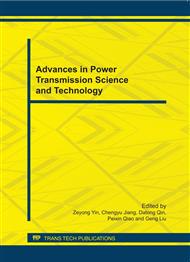p.696
p.700
p.704
p.709
p.713
p.717
p.721
p.725
p.730
Effect of Friction Coefficient on the Stiffness Excitation of Gear
Abstract:
This study addresses the effect of different friction coefficients on the stiffness excitation of gear using finite element technique. Firstly, the simulation model of single pair of gear teeth mesh is established, and the effect of friction coefficient on the composite stiffness values of the teeth meshing is studied. After that, simulation model of multiple pairs of gear teeth meshing is created and the normal load distributions under different friction coefficients in a single meshing cycle are calculated using quasi-static calculation method. Finally, the relationship between friction coefficient and stiffness excitation of gear system is obtained. The investigation results indicate that at the alternation place of single tooth meshing and double teeth meshing, the stiffness excitation of the system is greater under larger friction coefficient when double teeth meshing change into single tooth meshing, while the opposite situation occur when single tooth meshing change into double teeth meshing. The amplitude value of stiffness variation for single pair of teeth meshing under different friction coefficients is 2.12%, while the amplitude value of teeth loads variation for multiple pairs of teeth meshing under different friction coefficients is 22.87%.
Info:
Periodical:
Pages:
713-716
Citation:
Online since:
August 2011
Authors:
Price:
Сopyright:
© 2011 Trans Tech Publications Ltd. All Rights Reserved
Share:
Citation:


